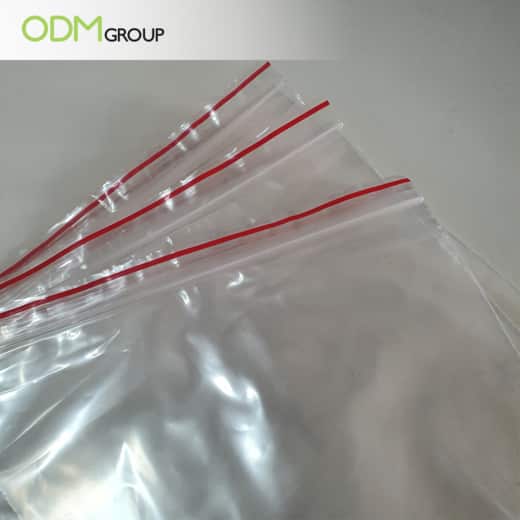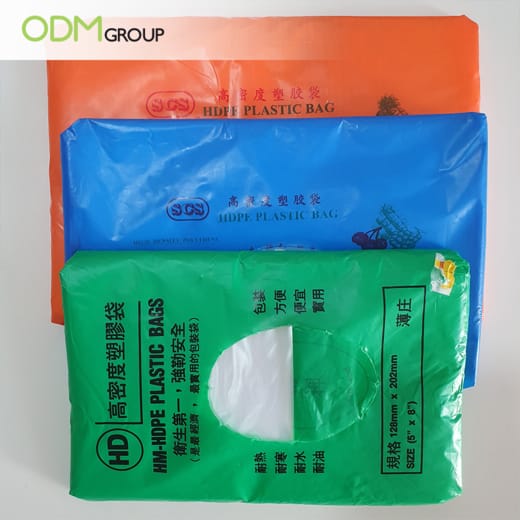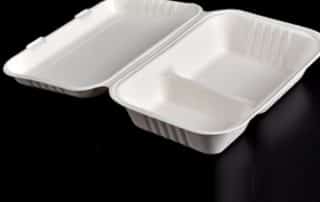This blog will provide you with the information you need on the types of plastic biodegradable packaging materials. The rising demand for sustainable plastic products by consumers can be seen. It will turn out to be more predominant as it effectively reduces human reliance on fossil fuels and decreases greenhouse emissions.
However, consumers will need to learn more about what’s behind biodegradable packaging materials such as poly bags. The length of a biodegradation cycle is exceptionally reliant on environmental parameters such as temperature. Virtually every material will biodegrade, given sufficient time.
1. Non-Biodegradable Packaging Materials
Non-Biodegradable basically depicts polymers that do not break down to an environmentally safe condition through biological processes. Used widely in the world due to its low cost, durability, and versatility. There are numerous types of fossil-based plastics, some of which are PET, PVC, and HDPE.

Biodegradable Packaging Materials
2. Biodegradable Packaging Materials
Plastic biodegradable packaging materials are created to minimize pollution, turning to compost after a certain period of time. Non-biodegradable plastics can be made biodegradable With the addition of specific chemicals, non-biodegradable plastics can be made biodegradable.
Hence, most plastic biodegradable packaging materials, such as poly bags, are made out of 99% HDPE + 1% biodegradable additives. Although there is an increase in cost to produce them, biodegradable packaging materials do help protect products.
What is HDPE?
High-Density Poly Ethylene (HDPE) is a thermoplastic polymer made from petroleum. HDPE plastic is used in a wide variety of applications such as plastic bottles, shampoo bottles, cutting boards, etc. It is known for its outstanding properties such as its ease of processing and forming, tensile strength, and resistance to chemicals.
What are the benefits of HDPE?
- Easily Meltable and Moldable
One of the primary benefits of this biodegradable plastic material comes from its inherent malleability where HDPE specifically dominates. HDPE remains rigid even with very high temperatures due to its high melting point. Nonetheless, when HDPE reaches its melting point, the material can be molded efficiently and productively. Eventually, used an assortment of interesting applications such as cutting boards, detergent bottles, milk jugs, and many more.
- Corrosion Resistance
Long-lasting and weather-resistant, HDPE can be sterilized by boiling, making it an ideal material for food and beverage containers. Additionally, HDPE has excellent resistance to naturally occurring chemicals found in soil. Moreover, the material resists mold, mildew, and rotting, making it the ideal material for underground piping used to deliver water.
- Large Strength to Density Ratio
The density of HDPE can range from 0.93 to 0.97 g. HDPE offers stronger intermolecular forces and tensile strength than LDPE. Hence, for this reason, a 60-gram HDPE container can safely carry over a gallon of liquid or roughly eight pounds of weight.
- Easily Recycled
One of the most important factors when deciding on plastic material is recycling. Fortunately, HDPE plastic is easily recyclable, helping keep non-biodegradable waste out of landfills. Considering how much plastic we use in our day-to-day lives, HDPE is a cost-effective, environmentally responsible material.

HDPE Plastic Bags
3. Oxo-Biodegradable Packaging Materials
People often confuse biodegradable packaging materials as oxo-biodegradable as well. However, they are in their own category. Plastic Oxo-Biodegradable packaging materials is a mix of additives to imitate biodegradation. They quickly break into small fragments, known as microplastics, but do not break down as much as plastic biodegradable packaging materials. Nonetheless, it will stay in the environment until they fully break down.
Oxo-Biodegradable Benefits
- Reduce the impact of plastic waste on the environment
- Adds value to products and brands
- No modification or investment in machinery required for manufacturers
- Cost-effective method of enhancing the environmental credentials of plastics
Learning Points
It is extremely important for all to be clear on the environmental benefits of bioplastics. This is to ensure that all plastic can be disposed of properly and through proper channels. Hence, with better knowledge of the different types of plastic biodegradable packaging materials, there is a greater ability to better strengthen the environment. Ultimately, allowing consumers to make better and more informed purchasing decisions on products with biodegradable packaging materials.
Contact Us
At ODM, we not only specialize in custom promotional product ideas and manufacturing of high-quality products, but we also provide our expertise on informed choices and processes. Other than that, we also offer other services such as factory selection and auditing, quality control, logistics and shipping, and product deck creation. If you’re looking to market a product or require help in producing high-quality products, be sure to contact ODM for our expertise!
Related Eco-Friendly Blogs
Eco-friendly products are a norm now, learn how Par-Tea is using them:
Check out how eco-friendly products can build customer relationships:
Other than Poly Bags, there are plenty of others:
Click here to find out other types of eco-friendly packaging:
Read this blog to learn how brands are adopting eco-friendly packaging materials:
Frequently Asked Questions
What is one disadvantage of biodegradable plastic materials?
There will be a need for composters to turn the biodegradable plastic materials into composts. Some countries face the issue of having proper and highly-maintained equipment to turn them into composts. Hence, leading to them being discarded improperly.
How long does it take for biodegradable plastics to decompose?
They take about 3 to 6 months to fully decompose. Significantly quicker than any other plastic materials take takes up to several years. Additionally, the time taken to decompose will be dependent on the temperature and humidity of the environment.
What is biodegradation?
A chemical process where biodegradable plastic materials are metabolized to Carbon Dioxide, Water, and Biomass with the help of microorganisms. Additionally, biodegradation times are dependent on conditions such as temperature and humidity of the environment. Thus, it can vary considerably.




